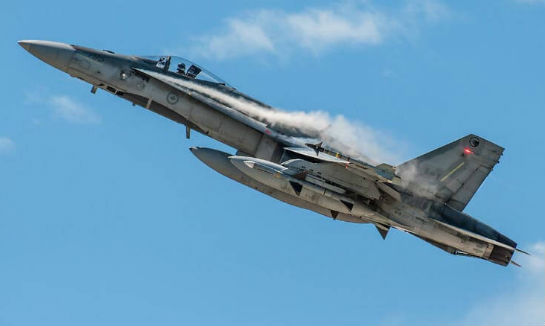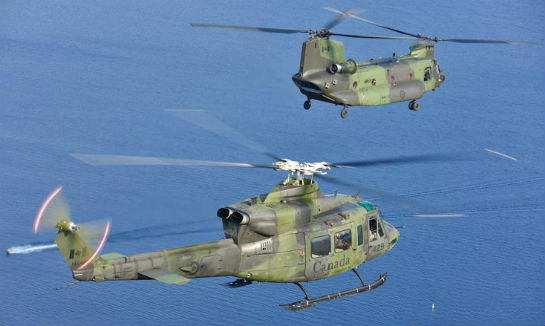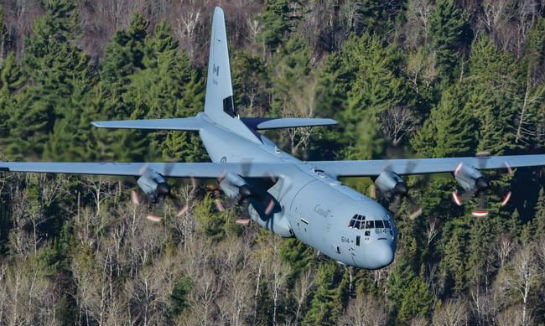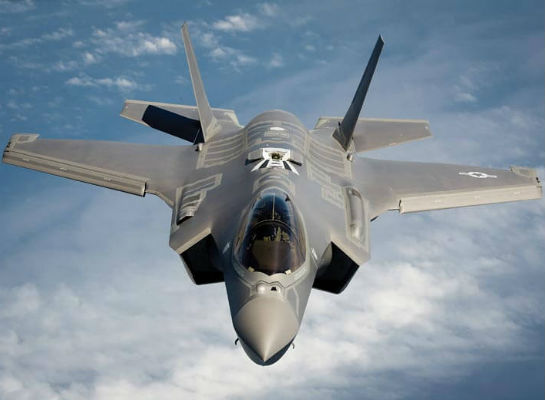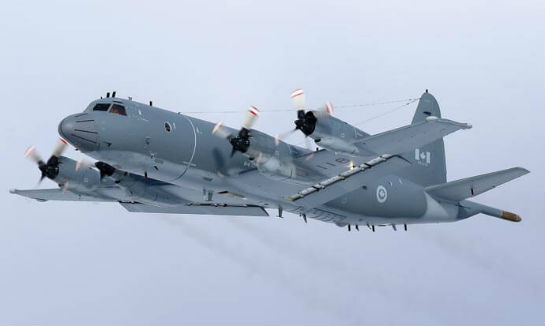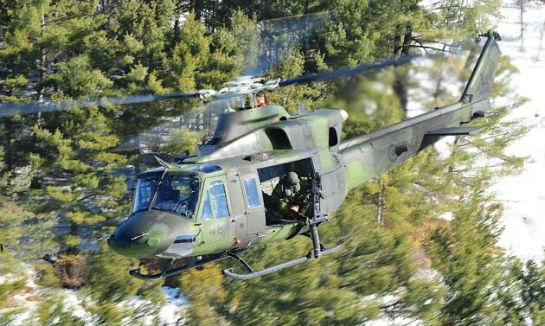Despite an initial campaign promise to scrap the purchase of Lockheed Martin’s F-35 Lightning II, the federal Liberals now seem to be favouring an open competition. The F-35 would be included as one possible option for replacing Canada’s fleet of aging CF-188 Hornet fighters, shown here. Stuart Sanders Photo
When a party campaigns on a pledge to scrap the purchase of the F-35A Lightning II, reduce the budget to replace the current fleet of CF-188 Hornet fighter jets, and shift that investment to new fleets for the Royal Canadian Navy, new priorities are to be expected.
While Justin Trudeau’s Liberal Party promised to “maintain current National Defence spending levels, including current planned increases,” and not allow funding to lapse from year to year, it also proposed to build “a leaner, more agile, better-equipped” military, a signal that cuts might be coming in some areas.
Although that message of change was reinforced in ministerial mandate letters after the Liberals took power, among the instructions were tasks that would sound familiar to ministers of the previous Conservative government. They included the development of an innovation agenda that expands support for incubators and accelerators, business innovation and clusters, and the Industrial Research Assistance Program. As well, the goal is to take advantage of new trade agreements to help businesses “increase their exports [and] expand the range of their trading partners,” while modernizing and simplifying procurement practices.
Most significant, however, was a commitment to “conduct an open and transparent review process to create a new defence strategy for Canada, replacing the now-outdated Canada First Defence Strategy.”
Since defence acquisition ultimately stems from government policy, both defence industry and Royal Canadian Air Force officials said in recent interviews that the new policy, expected to be released in early 2017, will inform many of the next major capital procurement projects.
According to the RCAF, its CH-148 Cyclone maritime helicopter project achieved a significant milestone on Jan. 27, 2016, when one of the helicopters, fully manned, landed on the deck of HMCS Halifax off the coast of Nova Scotia. Here, a Cyclone rests on the ramp at 12 Wing Shearwater while a CH-124 Sea King hovers nearby. Mike Reyno Photo
On April 6, the government launched a public consultation process to engage with stakeholders and unveiled a four-member ministerial advisory panel to “support and advise” the Minister of National Defence during the review process.
Jim Quick, president and CEO of the Aerospace Industries Association of Canada (AIAC), doesn’t expect to see any slowdown or stoppages to existing programs. But he does expect to hear new ideas on how to improve the overall process.
“I think the government will want to take the opportunity to step back and look at it from their public policy objectives. It is no secret [that] we have aging fleets, whether they are fighter jets or search and rescue aircraft, and they need to be replaced. We need to get procurements out the door. It is just not about cost and profit. We have got to change that discussion to price and value. How do we make sure the government is getting what they need for the right price, and they are getting the right value out of it?”
AIAC was a major contributor to both the Emerson and Jenkins reports on Canada’s future in aerospace and leveraging defence procurement that heavily influenced the previous government’s Defence Procurement Strategy and it wants to continue that leadership role.
While a new policy offers an opportunity to “simplify the process,” Quick noted that many of the fundamentals developed over the past five years “are pretty solid. Number one, let’s get the best equipment for our men and women so that they are protected in a manner that they should be; two, let’s make sure we do that in terms of the best value for the taxpayer; and three, while we are doing that, let’s develop additional Canadian capacity and capability so that we can actually service our fleets. I think some real ground has been laid.”
The RCAF, too, does not expect to see changes to programs that are already funded and underway. But with over 200 large and small capital projects on the books, there is a need for government policy to shape next steps. While a decision on the process to replace the CF-188 Hornets is perhaps the most obvious, that policy debate could also affect the acquisition of unmanned aerial systems, helicopter replacements, and future pilot and aircrew training programs.
“[There] will no doubt [be] some very targeted procurement priorities for this government … [that will] drive our priorities,” said BGen Philip Garbutt, director general of Air Force Development, though he noted that the core tenants that drive overall defence policy—defence of Canada, defence of North America, contributions to international peace and security—tend to remain the same.
When it comes to the CH-146 Griffon (bottom), a modest life extension program is being considered to upgrade the analog cockpit and potentially improve the engines. This is key for the Griffon’s role as an escort for the CH-147F Chinook (top). Currently, the Griffon cannot match the larger helicopter’s speed. The other alternative, of course, is to acquire a new fleet. Mike Reyno Photo
Few projects are ever conducted in isolation. Most have what Garbutt calls “programmatic interdependencies,” meaning decisions related to one can cause ripple effects across many others. Again, the future fighter jet is the most obvious example.
The winning aircraft of an open competition “will by definition identify the replacement for the fighter lead-in trainer,” he explained, “because it is the technology in that future fighter that drives how we prepare future fighter pilots.”
It will also influence the ground-based training systems for aircrews.
“By the very nature of that conundrum, we have physically separated the fighter lead-in trainer from the future aircrew training solution, because there is no sense committing to a fighter trainer until we know what that fighter will be,” continued Garbutt.
Less immediately apparent but equally important is the network architecture that will be required to support information sharing among fighter jets and with ground stations. “Without getting into the classified realm, fifth generation aircraft have an enormous informational tail that is beyond anything we have seen in the fourth generation environment,” Garbutt said. “The burden that places on secure networks and sharing information across those networks is enormous. Again, you are not going to make that large, foundational investment until you know what kind of fighter you are going to have.”
The defence policy review will also impact RCAF force development. Conducted along four vectors—agility, integration, reach and power (AIR Power for short)—it draws on the input of partners from across the Canadian Armed Forces, National Defence and other government departments, in what Garbutt calls “formation flying.” But, because of the collaborative nature of that development, capability investment decisions will hinge, to some extent, on government policy.
What won’t be affected, he said, are any programs that are already funded and underway. That includes the fixed-wing search and rescue (FWSAR) project, now evaluating the bids of three contenders; several projects that have yet to reach full operational capability, such as the CC-130J Hercules transport fleet, acquired in 2010, and the CH-147F Chinook medium- to heavy-lift helicopter; and programs like the CP-140 Aurora Incremental Modernization Project, which is completing Block 3 and is under contract for Block 4.
Canada placed an order for 17 CC-130J Hercules aircraft in 2007. Lockheed Martin delivered the final member of the fleet on May 8, 2012. The CC-130J has quickly proven its worth while performing a number of missions at home and all over the world. Mike Reyno Photo
Near the top of the priority list, though, are future aircrew training and the RCAF’s simulation strategy. The former involves the transition of two contracts, NATO Flying Training in Canada, which expires in 2021, and Contracted Flying Training and Support, which expires in 2027, into “a new procurement strategy that will deliver a solution for all of our aircrew training: pilots, be they rotary wing, multi-engine or fighter; and air combat systems officers (ACSOs) and airborne electronic sensor operators (AESOPs).”
Though he is still defining the high-level mandatory requirements for the project, Garbutt said the intent is to capitalize on the “synergies between all of those occupations. We want to make sure it satisfies the requirement for basic pilot training for our streams of fighter, multi-engine and rotary-wing pilots, and builds in the necessary synergies for ACSOs and AESOPs so you don’t see a tonne of duplication.”
He noted that the simulation strategy is an effort to not only improve aircrew training, but to also “offset” some of the costs of what has become an increasingly expensive business by limiting the wear and tear on aircraft, reducing the air force environmental footprint, and introducing training under conditions that would be otherwise cost prohibitive (and often too dangerous) for live aircraft. “The trick is striking the right balance between live flight and simulated flight. That is what we are going through right now.”
Just what “leaner and more agile” might mean for those priorities will likely be spelled out in the defence policy review. Garbutt expects the ongoing discussion around “tooth to tail ratio,” which means prioritizing operations over supporting staff positions, to continue, but he said it is sometimes “very difficult to differentiate between what is really tooth and what is really tail. There are some very important positions in headquarters that enable operations, [both] domestic and overseas.”
Whatever policy decisions the Liberal government decides to make, Garbutt noted that the recent operational tempo has verified the requirement for expeditionary capability and validated the four vectors of AIR Power.
“How many times have we heard the government, as they see a humanitarian crisis developing, talk about delivering aid, and within 48 hours there is a grey tail on the ramp delivering that government decision? There is no other capability within the CAF [Canadian Armed Forces] inventory that can do that. We have made investments in strategic mobility that give the government options.”
RCAF projects on the runway
Next-Gen Fighter
The poster child for a project waiting on a policy decision, the next-gen fighter was the only RCAF project to be specifically referenced by the Liberals during the election.
Fifth generation aircraft, such as Lockheed Martin’s F-35 Lightning II, generate much more data than their fourth generation predecessors. Consequently, a strengthened network architecture would be required to support information sharing between jets and ground stations. Master Sgt John R. Nimmo Sr. Photo
“We will immediately launch an open and transparent competition to replace the CF-18 fighter aircraft. The primary mission of our fighter aircraft should remain the defence of North America, not stealth first-strike capability,” the party wrote.
After the Conservative government’s plan to acquire 65 F-35A aircraft was put on hold in 2012, the RCAF conducted “an extensive evaluation of options [and] identified risk both operationally and strategically from a procurement perspective of each one of those options,” Garbutt said. The government released a report outlining the methodology of its assessment, but the report on how each aircraft fared against RCAF mission scenarios remains classified to respect the non-disclosure agreements Canada has with governments and industry.
To ensure the RCAF can meet operational requirements until a competition is held and a new fighter jet is introduced, the air force will extend the life of the current fleet of CF-188 Hornets until 2025 by making structural upgrades, including the replacement of some flight controls, adding a new transponder, and possibly enhancing the core avionics system.
CP-140 Aurora Block 4
The rapid introduction of interim beyond-line-of-sight (IBLOS) capability for Operation Impact has foreshadowed the eventual capability of the Block 4 Aurora.
“The CP-140, while known to many as a classic anti-submarine warfare, anti-surface warfare platform, has really come into its own as an overland C4ISR [command, control, communications, computers, intelligence, surveillance and reconnaissance] platform that supports in a very effective way Army and SOF [special operations forces] activities and provides tangible and real-time evidence and information to commanders on the ground,” Garbutt said.
Over the past 15 years, the CP-140 has undergone upgrades to its various systems in four blocks known as the Aurora Incremental Modernization Program (AIMP). Block 3, which includes new sensors and a data management system, is ongoing. Block 4, which will include a fully integrated BLOS capability, Link 16 data exchange, and a self defence suite, is under contract. Over a similar timeframe, the aircraft are also receiving a structural life extension.
The CP-140 Aurora has experienced a renaissance in recent years. The classic antisubmarine warfare platform has been modernized through a series of incremental upgrades, and is now lauded as a highly capable overland surveillance and reconnaissance aircraft. Michael Durning Photo
In total, 14 aircraft will be modernized to the Block 4 standard by the early 2020s. “It will be a world class overland and overwater capability,” Garbutt said. “The investment has been excellent.”
JUSTAS
While the Block 4 Aurora may have few rivals as an ISR platform, it is a much larger and more expensive aircraft to operate than an unmanned system, and it presents a more attractive target to ground-based threats. So the Joint Unmanned Surveillance Targeting and Acquisition System (JUSTAS) project is a growing priority.
JUSTAS has been in development for over a decade. The RCAF cut its teeth with a leased option in Afghanistan, which has greatly helped “inform the high level mandatory requirements,” Garbutt said.
The project is currently in options analysis. However, a request for information was issued to industry in January to help “re-inform the business case analysis,” and Garbutt expects a submission to both the department and Treasury Board in the “near term.”
Northrop Grumman has pitched a variant of its Global Hawk unmanned surveillance aircraft — dubbed the Polar Hawk — for patrolling Canada’s far northern regions. Northrop Grumman Image
At present, JUSTAS is based on two major tenants: domestic ISR and an expeditionary role that would include precision strike capability. That, Garbutt said, will require confirmation from the government’s defence policy, which in turn may determine whether the RCAF acquires a single platform or a mixed fleet.
Fixed-Wing SAR
With a request for proposals now closed, the RCAF is limited in what it can say about the program to replace the legacy CC-115 Buffalo and CC-130H Hercules search and rescue aircraft. Three bids were submitted by the Jan. 11, 2016, deadline: Airbus Military’s C295W; Alenia Aermacchi’s C-27J Spartan; and Embraer’s KC-390. The competition is expected to be completed by July and a winner announced in the fall.
Indirectly related to the aircraft replacement is a SAR mission management system (SMMS) that is now entering project definition. The contract, to be awarded in 2017, is estimated to be worth up to $50 million.
Operated by the Joint Rescue Coordination Centres, SMMS would identify and locate a potential SAR incident via the space-based Medium Earth Orbit Search and Rescue (MEOSAR) project, a United States Air Force next-generation GPS III constellation that will include Canadian-based ground stations with specialized satellite tracking software and information processing systems.
“With MEOSAR, SMMS and FWSAR, we now have the potential of narrowing down that search pattern to a very small area. And with electro optics, you may not even have to go below cloud level to identify exactly where that [incident] is,” said Garbutt.
Helicopter Life Extensions
With both the CH-149 Cormorant search and rescue helicopter and CH-146 Griffon tactical transport helicopter experiencing “challenging” obsolescence issues, there is an internal debate about the merits of replacement, life extension and even lease options. Parts for airframe and cockpit components are becoming more difficult to find, affecting aircraft reliability and availability.
The CH-146 Griffon tactical transport helicopter is experiencing“challenging” obsolescence issues that necessitate a fleet upgrade or replacement. Mike Reyno Photo
The obsolescence challenge is greater for the Griffon, but both will need a decision fairly soon. However, neither project is funded in the current investment plan. Replacing both fleets would be prohibitively expensive, so the RCAF is analyzing options for a CH-149 Cormorant mid-life upgrade (CMLU) and Griffon limited life extension that would keep the fleets in service until the 2030s and 2040s, respectively.
With just 14 airframes, the Cormorants have been operated by SAR squadrons on the east and west coasts; Griffons have performed the rescue role with 424 Transport and Rescue Squadron at 8 Wing Trenton. One of the mandatory requirements for the CMLU is the return to four Canadian SAR helicopter-compliant operations, which will require between 19 and 21 aircraft. “It means we either have to increase the number of Cormorants or consider some other configuration,” Garbutt said. “We’ll examine the cost of lease or buy.”
A third option would be to reconfigure seven of the nine VH-71 presidential helicopters that were acquired from the U.S. in 2011 for spare parts. Garbutt said talks with manufacturer AgustaWestland and IMP Aerospace suggest the aircraft could be CMLU-compliant fairly easily. Furthermore, the work could be performed before upgrades are made to the existing fleet, limiting any disruption of SAR service.
“You can modify those aircraft first, enter them into service, and then begin to pull out the other aircraft from service. So no doubt that offers us a way to get back to four-base operations, remove the Griffon from Trenton, and also make sure we have adequate aircraft in operations at all times,” he commented. “Now, leasing and buying will do the same thing. The business case that looks at all of these options will play this out.”
Fourteen CH-149 Cormorants are operated by search and rescue squadrons on the East and West Coasts. They are currently in need of a mid-life upgrade. Mike Reyno Photo
For a combat fleet like the Griffon, the options are more limited. Leasing is off the table. And, while a modest life extension program would upgrade the analog cockpit and potentially improve the engines (key for a Chinook escort that can’t match the CH-147F’s speed), it might make more sense, despite the cost, to acquire a new fleet.
Garbutt said all options are being explored, though modifying some and replacing the rest would be a last resort. “Fleet rationalization is a priority and we would probably try to get away from fragmenting our rotary-wing assets even further. There is a capability-based planning element to this, and we’re working very closely with the Chief of Force Development.”
Maritime Helicopter Program
After reaching what the RCAF acknowledges was a crisis point in 2013, the government and prime contractor Sikorsky adopted a developmental strategy that will see the new CH-148 Cyclone maritime helicopter delivered to the air force and navy in a series of two blocks.
Six Cyclones were delivered to 12 Wing Shearwater, N.S., in Block 1 configuration in 2015, allowing the RCAF to retire the first of the 50-year-old CH-124 Sea Kings. The remaining 28 rotorcraft are expected by 2018, and all 28 will be Block 2 compliant by 2020. A comprehensive governance structure is overseeing the process.
“We’re now able to deliver the Cyclone in a timetable that works for the RCAF and the RCN,” concluded Garbutt. “The Cyclone is a remarkable helicopter. When we see the Block 2, this will be a world-class maritime helicopter.
